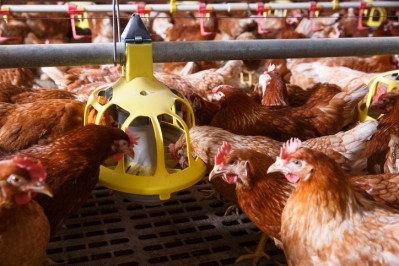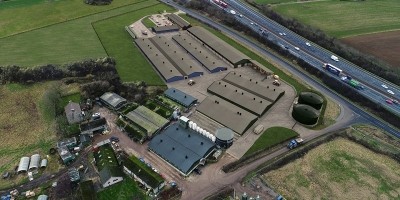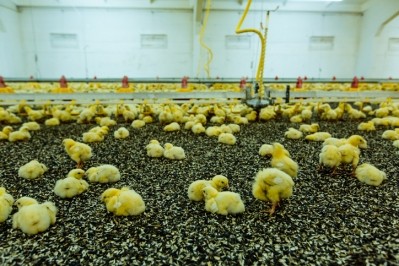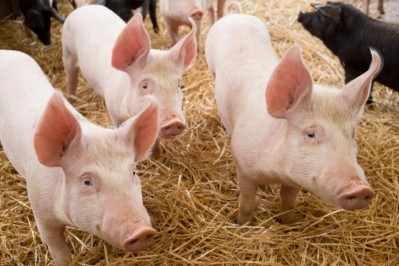Special Edition: Gut health in pigs and poultry
Strengths and weaknesses of probiotic use in piglet rearing

However, some studies also reported no positive results (De Cupere et al., 1992, Trevisi et al., 2011, Kreuzer et al., 2012), reported the analysts.
From a practical perspective, better knowledge of the mode of action of probiotics would be needed to tailor them to particular challenges piglets face, they said.
The reviewers, led by Emili Barba-Vidal, from the Universitat Autònoma de Barcelona, in Spain, stressed that the neonatal and early periods of the life of farmed animals are critical; it is when the gut and immune system have not yet fully developed.
“These deficiencies result in low disease resistance in piglets and make them vulnerable to stress reactions or invasion by pathogenic microorganisms, which may seriously affect healthy individual development (Konstantinov et al., 2006, Levast et al., 2014).
“Moreover, this period is considered critical in terms of productivity, as performance parameters at the first week post-weaning can be correlated to subsequent performance of the pigs up to the market weight (Kats et al., 1992).”
Mode of action
The nursery stage is where the use of probiotics is receiving more interest in terms of swine production with the aim of improving weaning outcome (de Lange et al. 2010), said the team.
The reviewers noted that probiotics, potentially, can act in several ways, such as preventing diarrhea, re-establishing microbiota balance after a transient drop in favorable bacteria, protecting against pathogenic bacteria, enhancing intestinal barrier function and stimulating immunity.
“A vast body of literature appeals to different probiotic capacities to enhance productive parameters in piglets by achieving positive interactions with the host. However, only a few of the published articles attempted to measure the increase in nutrient bioavailability in piglets due to a probiotic treatment (Chen et al., 2006, Yu et al., 2008, Giang et al., 2011). The rest of the studies did not investigate the origin of such improvements.”
Higher bioavailability of feed nutrients, indirect gut health modulation relieving weaning stress, preventing diarrhea, and improving the intestinal microbiota profile, etc. or perhaps a combination of both may be involved, said the reviewers.
“In addition, our group recently suggested the existence of gut-brain axis modulation with a Bacillus licheniformis probiotic that increased many active behaviors, including eating (Barba-Vidal et al., 2017). On the other hand, as probiotic treatments are known to be strictly related to the [farming] environment, it is likely that greater effects are obtained in low-sanitary status farms, which greatly challenge pig health status (Kenny et al., 2011),” they added.
Reduction of pathogen pressure
Another important target for probiotic use at the nursery stage in pigs is the reduction of pathogen pressure, they said.
“To-date, several mechanisms have been described for probiotics reducing gut pathogens, including competitive exclusion (Genovese et al., 2000, Collado et al., 2006), modulation of the immune response (Duncker et al., 2006, Medina et al., 2007) or the production of bacteriocines (Cladera-Olivera et al., 2004, Diep et al., 2009).”
Interest in reducing pathogens has increased since the use of antibiotics as growth promoters was banned in the EU (Regulation (EC) No 1831/2003). Moreover, current strategies such as therapeutic use of antibiotics and high mineral dosing are largely questioned (Shi et al., 2011, EFSA, EMA 2017). Hence, probiotics can play a critical role here, where prevention for clinically relevant pathogens such as E. coli is vital to prevent disease states post-weaning, said the assessors.
“However, in the majority of cases examined, probiotic positive effects against pathogens tended to be rather discrete,” they noted.
Spectacular improvements, such as eliminating pathogen excretion or important improvements in clinical or productive parameters have not been reported, they said.
“Hence, the inclusion of probiotics should not be expected to have the same effects than with an antibiotic on its own, and combining them with other feed and/or management strategies with a more holistic approach may be necessary.”
Another probiotic linked strategy that has demonstrated a positive impact in piglets is the addition of targeted nutrients to increase the probiotic product’s bioavailability.
“For instance, supplementation of selenium-enriched probiotic treatments (based on L. acidophilus and Sacharomyces cerevizae) has been tested with positive results in animal-growth performance, antioxidant status, immune function and some selenoprotein mRNA expression, in piglets raised under high ambient temperature (Gan et al., 2014).
“Results from this study suggest the Se-enriched probiotic may be useful to prevent heat stress, a major health problem in pigs which reduces the antioxidant capacity and immunity (Xiang-hong et al., 2011).”
In conclusion, they said that the nursery stage is a highly productive one, where efficient tools are needed; they anticipate probiotics having more potential in the future in relation to this life-stage.
Source: Livestock Science
DOI: https://doi.org/10.1016/j.livsci.2019.02.017
Title: Practical aspects of the use of probiotics in pig production: A review
Authors: E. Barba-Vidal, S.M Martín-Orúe, L. Castillejos














